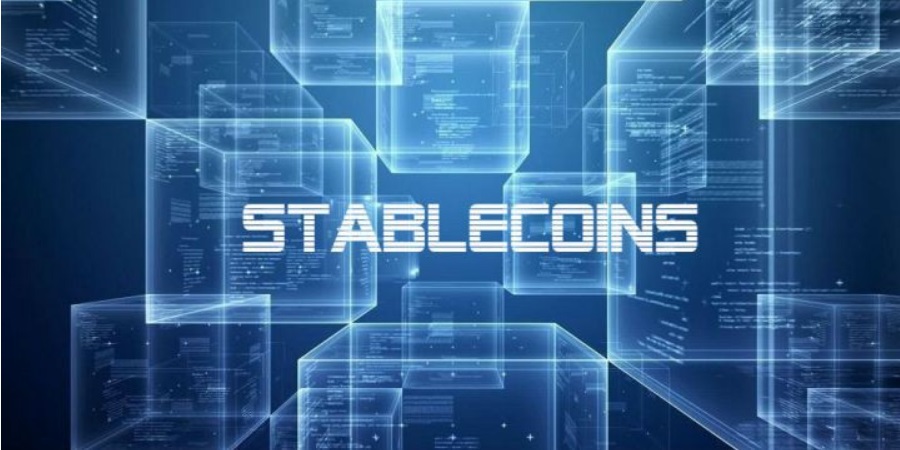
What Voice-over-IP (VoIP) did for telecom, stablecoins are now doing for payments – quietly transforming the infrastructure behind the scenes. With nearly $250B in market cap and growing support from Visa, Mastercard, and fintech platforms, stablecoins are no longer just a crypto niche. They’re becoming a fast, cost-efficient alternative in both cross-border and domestic retail commerce.
Douwe Lycklama – Vice President of Innopay and Jelmer Koster – Senior Consultant at Innopay explain in the article below why this shift matters – not just for crypto insiders, but for merchants everywhere. They break down four practical reasons why stablecoin acceptance should be on your radar, from global reach to cost optimization and regulatory clarity.
The big picture? This isn’t a hype cycle. It’s the start of a long-term shift in how value moves across the globe.
_______
Stablecoins are entering mainstream finance, offering the potential to make the existing retail commerce payments ecosystem faster, better and cheaper. This blog explains why stablecoin acceptance is an infrastructure shift, not a hype cycle, and highlights four key considerations to help merchants position themselves to take advantage of this ‘silent revolution’.
No longer just a niche in crypto
Stablecoins – i.e. a cryptocurrency pegged to a reference value, mostly fiat currencies – are no longer just a niche in crypto; they’ve become its most visible and practical application. As of May 2025, the stablecoin market is worth close to USD250 billion. This growth has a strong tailwind for several reasons. These include more global regulatory clarity in the US, UK, EU and many other jurisdictions, the strong business model for stablecoin issuers (especially in the US), and the role USD stablecoins play in government finance. Stablecoin issuer Tether is now the seventh-largest buyer of US Treasury Bonds, but it is still the odd one out in a list of sovereign buyers.
While the bulk of stablecoin volume still flows through crypto trading – serving as the instant ‘cash leg’ – we’re now witnessing a shift. Stablecoins are entering mainstream finance, both wholesale – e.g. for settlement of tokenised financial instruments like bonds – and in retail commerce. On the retail side, namely stablecoin merchant acceptance, they offer real benefits (faster, better, cheaper) to the existing payments ecosystem.
From trading floors to store floors
Reach for retail payments is still relatively low. Yet, we are on the brink of accelerating reach with big payment networks embracing stablecoins:
Visa has used stablecoins for 24/7 merchant payouts since late 2023, bypassing the limitations of traditional banking hours. Recently, Visa partnered with stablecoin orchestration platform Bridge to make stablecoins accessible for everyday purchases. Fintech developers can now offer stablecoin-linked Visa cards to their end customers in various countries through API integration.
Mastercard recently announced a comprehensive suite of stablecoin services. This end-to-end proposition includes wallet enablement, card issuing and merchant acceptance – potentially billions of terminals worldwide. This creates a closed-loop system of regulated stablecoin flows, linking vetted card-issuing crypto platforms (like OKX, Kraken, Gemini, etc.) to acquirers and merchants. Payouts in stablecoins are optional but increasingly attractive. Global remittances are also supported, as well as some more institutional use cases.
Why should merchants care?
Here are four key considerations for merchants thinking about accepting stablecoins:
1. Know your buyer
Stablecoin holders are a distinct and growing demographic. They include:
Gig workers earning in crypto (e.g., 93% of global freelancers want to receive a portion of their income in crypto and stablecoins).
Individuals in inflation-prone economies (e.g., stablecoins account for 43% of total transaction volume in Sub-Saharan Africa).
Affluent, young, digital-native consumers (e.g., more than half of Generation Z owns crypto).
2. Go global
Stablecoins enable cross-border payments in places where card infrastructure is weak or bank coverage is low. This offers financial inclusion for the ~27% of global adult population currently unbanked [source] to those with a smartphone.
3. Optimise costs
Using networks like Mastercard or Visa for stablecoin payments is simple, but fees may remain close to traditional levels
Lower fees are possible when merchants accept stablecoins directly to a crypto wallet, but this requires technical integrations and managing conversion to fiat
Hybrid solutions like Flexa, Coinbase Commerce, and Request Finance offer the best of both worlds: low-cost, fast, irreversible payments, often with optional fiat settlement
4. Regulatory peace of mind
AML and KYC compliance is essential. Working with specialised crypto payment providers ensures that merchants stay on the right side of regulations, minimising their risks.
The bigger picture: shifting infrastructure
Stablecoin acceptance is not a hype cycle; it’s an infrastructure shift in progress. Much like how Voice-over-IP (VoIP) transformed the telecom industry, this change in the payments sector will be gradual but irreversible.
We believe digital public infrastructure will begin to complement – and eventually integrate with – legacy financial systems in the coming years. End-users might not notice dramatic changes right away, but payments will become faster, cheaper and available 24/7 to anyone across the globe over time.
This shift will be largely invisible – a silent revolution – but merchants that start experimenting today will be better positioned for tomorrow.
Stay tuned. This is only the beginning.
Banking 4.0 – „how was the experience for you”
„To be honest I think that Sinaia, your conference, is much better then Davos.”
Many more interesting quotes in the video below: